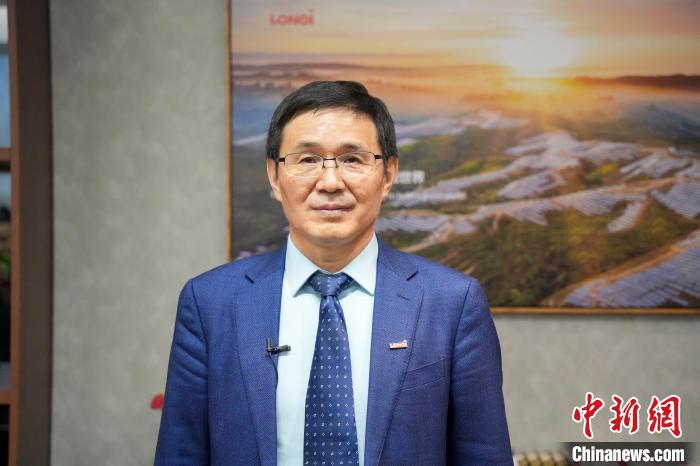
The picture shows Zhong Baoshen. Photo courtesy of Song Meina
BEIJING, Beijing, March 3 (Reporter Alina) "Rural revitalization is not only a rapid economic development, but also a green and low-carbon development to meet the villagers’ expectations for a better life." Zhong Baoshen, deputy to the National People’s Congress and chairman of Longji Green Energy Technology Co., Ltd. (hereinafter referred to as Longji Green Energy), said in an interview recently that it is suggested to formulate rural green building development plans and implementation plans to "set off" the "green trend" of new rural buildings and help rural low-carbon development.
Longji Green Energy has been committed to the research and development and application of solar photovoltaic industry for a long time. Zhong Baoshen has "deeply cultivated" the field of new energy and has his own views on the application and development of new energy.
"The development of low-carbon life has become a consensus at present, but in the promotion of green buildings, most of the new rural buildings are traditional buildings, and the proportion of green buildings is low." After careful investigation and visit, Zhong Baoshen believes that the development planning and implementation plan of rural green buildings are still relatively weak.
As a new energy R&D and application enterprise, Longji Green Energy is constantly trying to expand the application scenarios of photovoltaic in rural areas. In 2017, distributed photovoltaic power stations were built on the roofs of 544 village clinics in Guyuan, Ningxia, using clean energy technology to solve the problem of heating in winter in rural areas, and the grassroots village clinics were transformed from coal-fired stoves to solar power generation heating.
Household photovoltaic, village-level power station and distributed agricultural greenhouse power station & HELIP; … In recent years, Longji Green Energy has integrated agricultural biomass and rural tourism into photovoltaic application scenarios. When photovoltaic industry is organically combined with green industries such as rural agriculture, forestry, animal husbandry and fishery, it also promotes the transformation and upgrading of agricultural industry and the improvement of rural living environment.
"We believe that the photovoltaic industry and green buildings have broader application scenarios." Zhong Baoshen said that in the green building planning, the environmental advantages and economic advantages of photovoltaic building integration can be fully considered. I also expect the photovoltaic industry to contribute to the goal of double carbon.
"I will continue to pay attention to the low-carbon development in rural areas and the promotion and construction of green buildings in rural areas." Zhong Baoshen said that he hoped that while the villagers were getting rich, beautiful countryside would also have a steady stream of "green" kinetic energy for sustainable development. (End)